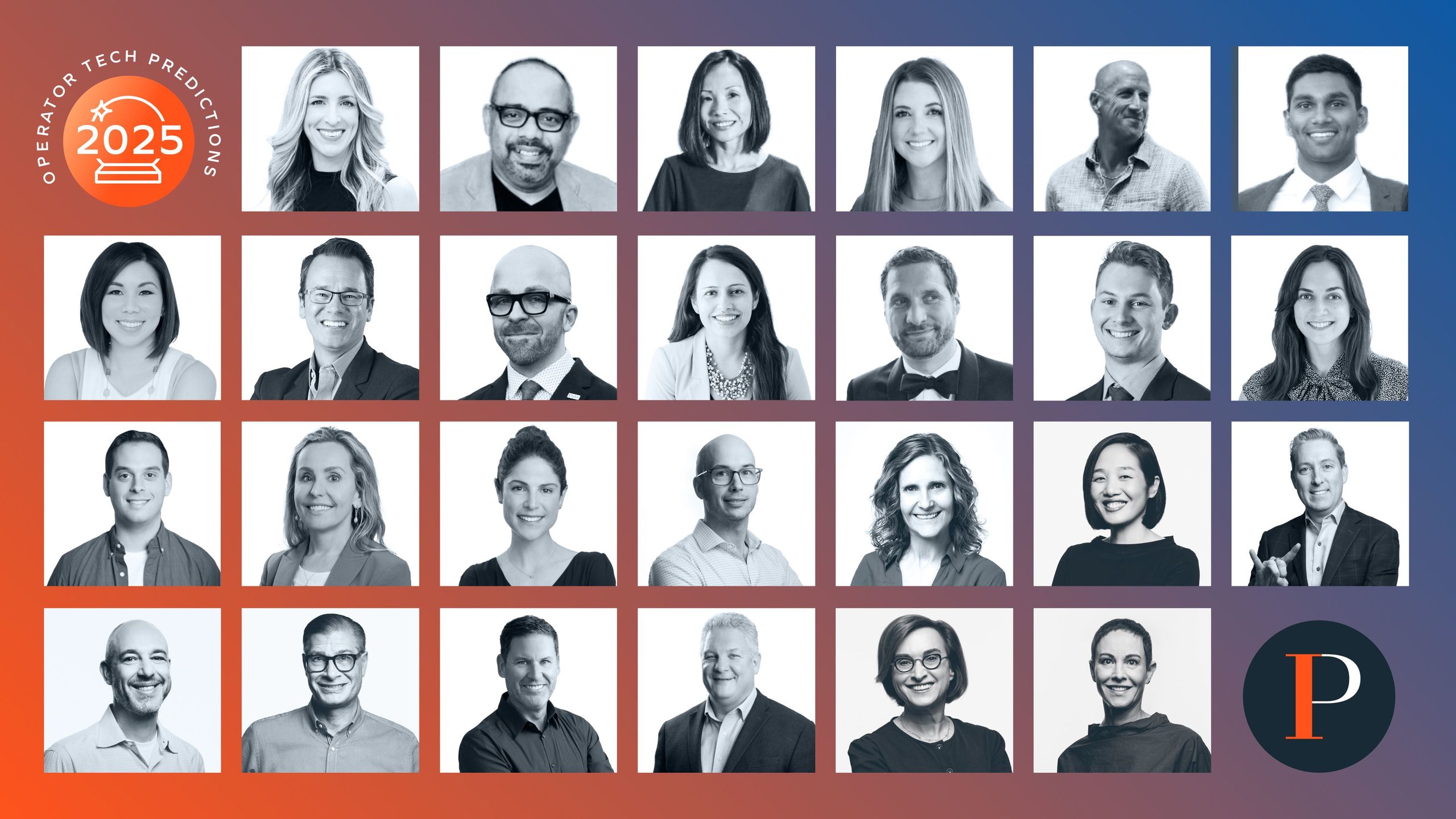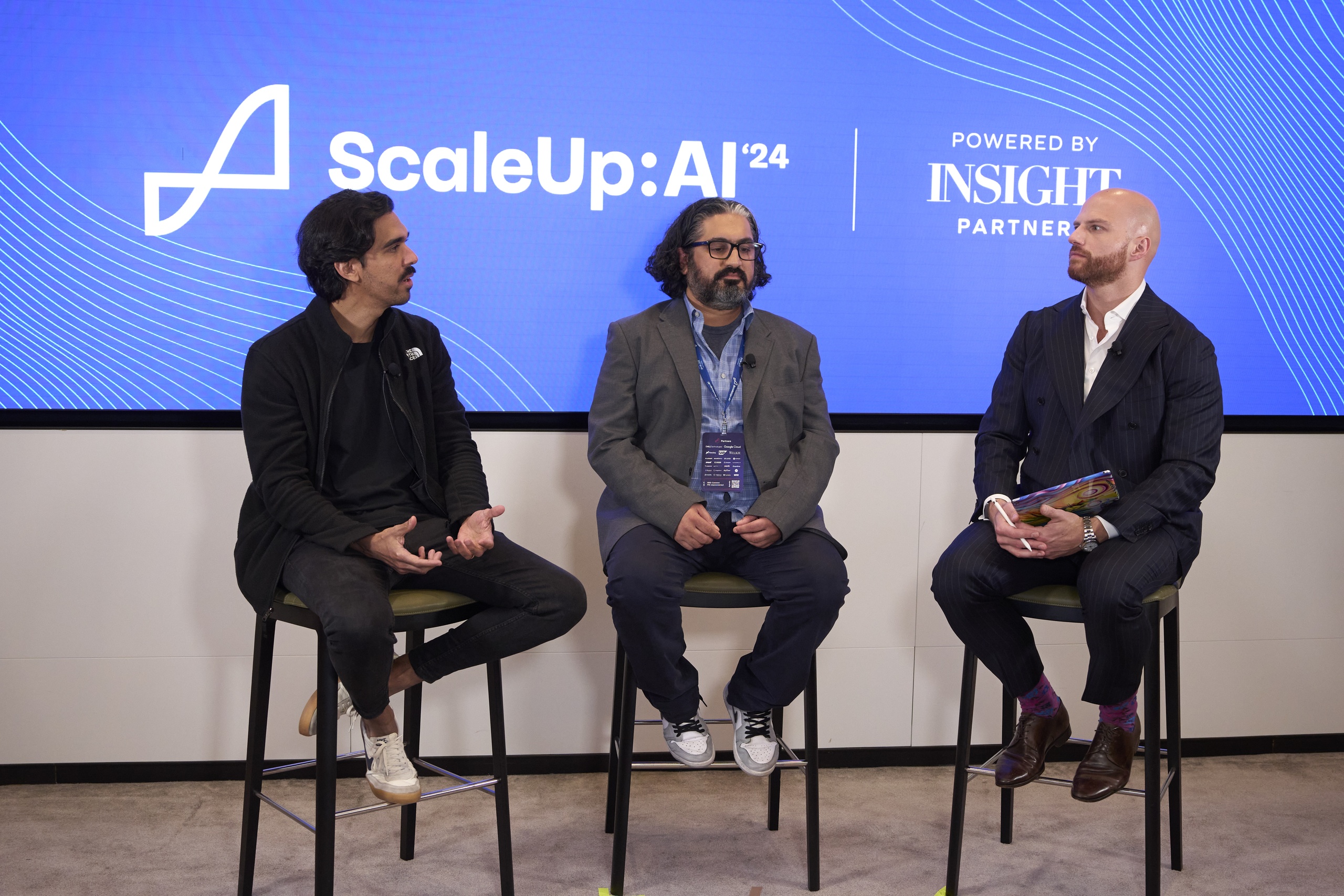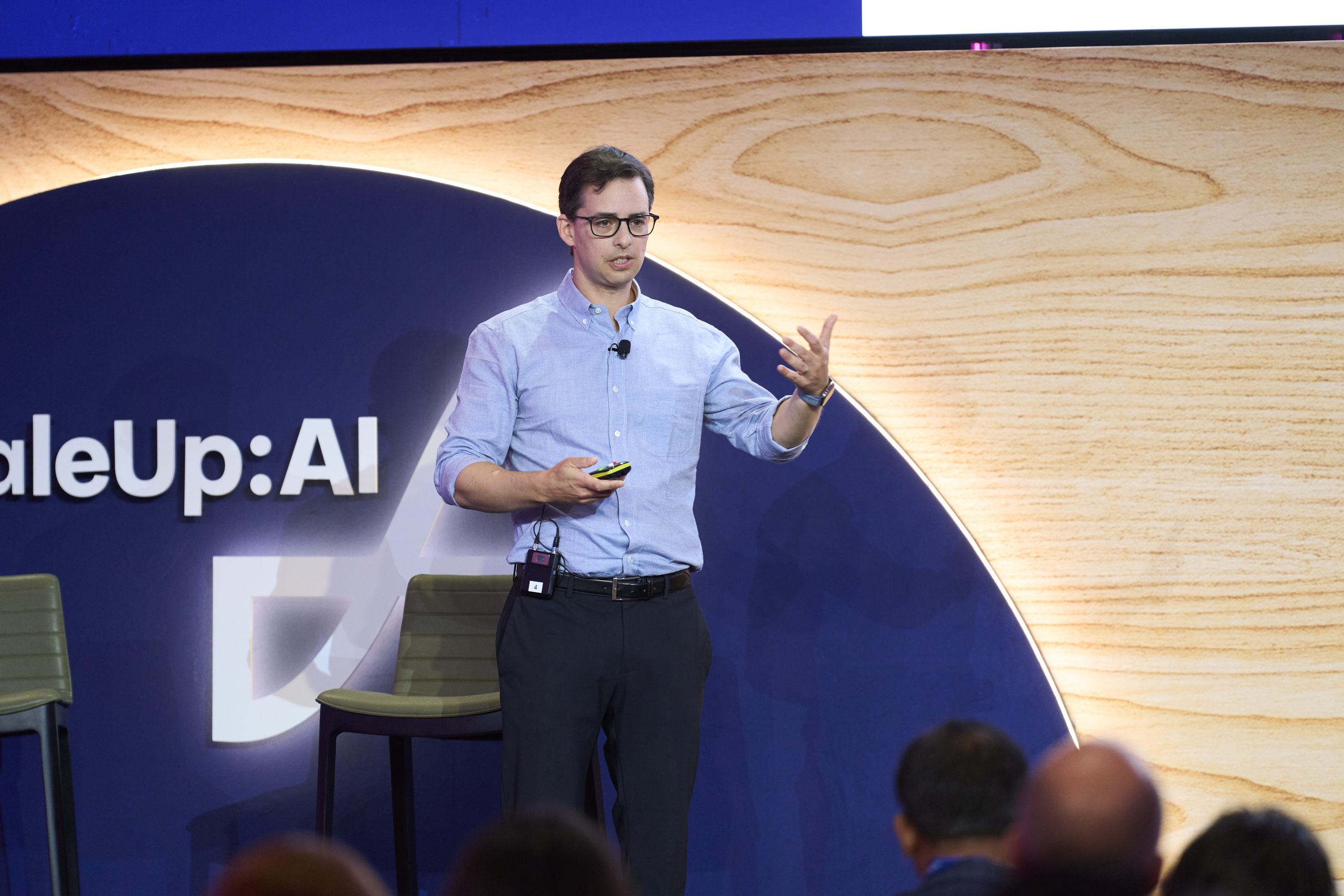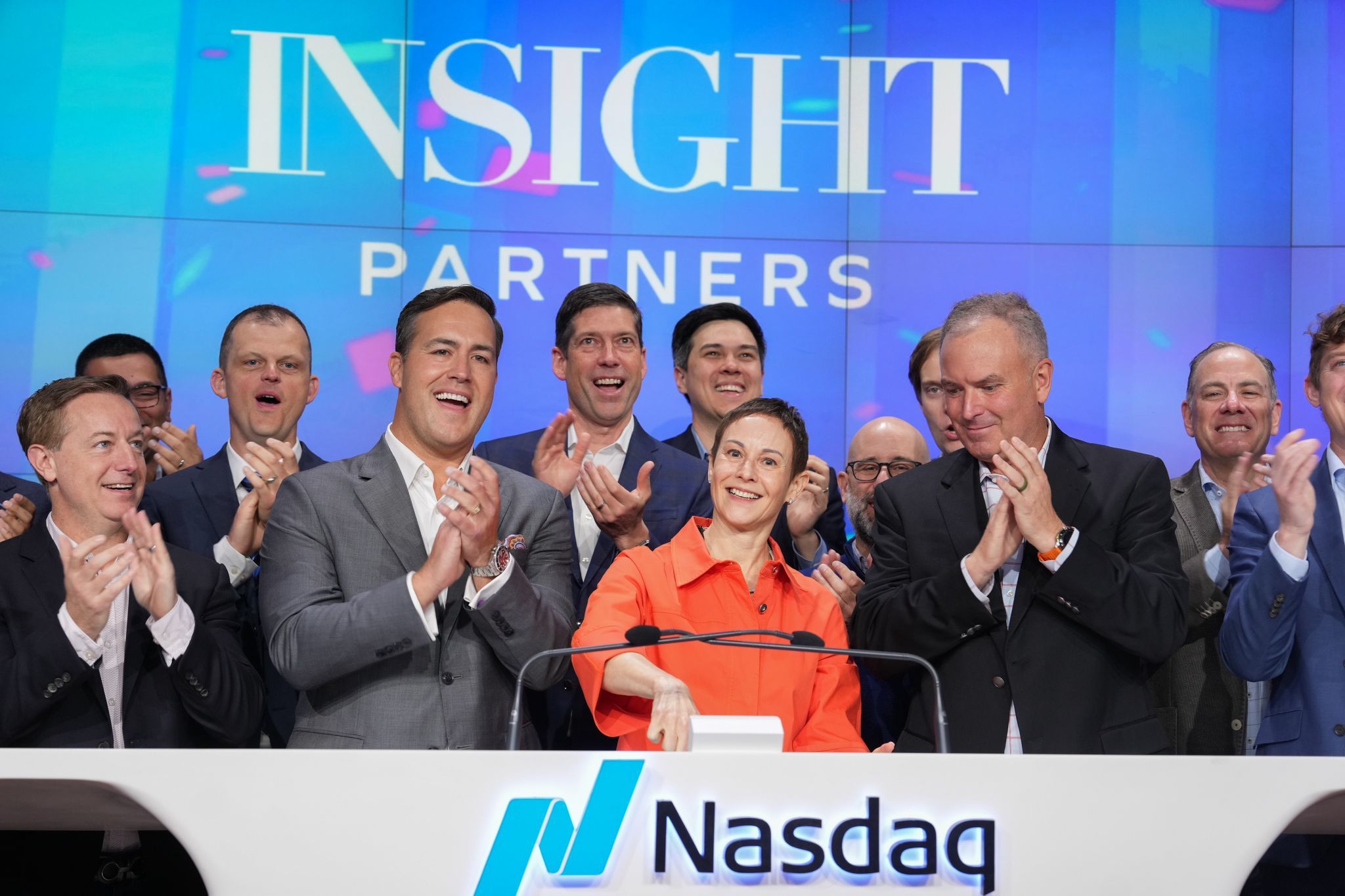Predictions for ScaleUp GTM leaders and founders in 2025

We tapped into the collective expertise of Insight Onsite — a dedicated team of over 130 professionals with deep operational knowledge, and expansive customer and talent networks. Onsite works hand-in-hand with our founders and leaders, helping drive the growth and success of our portfolio companies at every stage.
Their insights shed light on the priorities and challenges top of mind for founders and operational leaders as they navigate 2025.
Executive teams will “do more of less,” doubling down on efficiency and what’s really driving ROI.
“With investor focus on efficient growth and generating positive cash flow, founders may need to take a hard look at what isn’t driving value — and reassess their strategy from there.” — Barrie Markowitz
Roxi Wen: “The CFOs of 2025 won’t just report on growth, they’ll architect it. Expect a shift from cost cuts to intelligent allocation — streamlined lean operations, with spend focused on growth-critical innovations and high-margin customer segments. Unit economics will become the new boardroom battleground. The CFOs who can face the relentless pressure to defend granular unit-level economics will help define the next wave of winners.”
Bryan Powell: “The 2024 emphasis on efficiency and thoughtful expense management is expected to continue in 2025. SaaS companies should look to find the balance between managing costs and enabling growth by leveraging AI, technology, and data-driven insights to streamline workforce strategies without compromising human-centric initiatives.”
Travis Kassay: “Years of rampant growth gave way to major market pressures, which caused companies to stray from the fundamentals. This corrected in 2024; in 2025 we should see companies continue to focus on the basics.”
Hilary Gosher: “The plentiful cash raised 2-3 years ago is dwindling. Companies will either have the growth and performance to attract new capital or will need to find a home with a larger company. In 2025, M&A will be vibrant: we will see consolidation of sub-scale companies as investors look to cut their losses, with willingness to take stock in acquiring to preserve some upside.”
Amanda Prokaski: “Founders must aim to balance growth expectations with durability. Start with the end in mind, thinking about your next fund raise or exit timing, then determine the steps to take in 2025 to get there.”
Barrie Markowitz: “Marketing follows the Pareto principle. According to our 2024 Pipeline Generation Survey (ScaleUp Academy link, only available to portfolio), four channels deliver 70% of marketing-sourced pipeline across the portfolio. But 2/3 of companies use over 11 demand-gen channels. With investor focus on efficient growth and generating positive cash flow, founders should take a hard look at what isn’t driving value — and take action.
Many companies are trying to do too much. They may be targeting too many segments or multiple geographies. As buyers become increasingly discerning, it’ll become even more important for them to commit to an area of focus and do fewer things better.”
Showing clear ROI for AI implementation was a point emphasized by many.
Gary Survis: “The first priority for AI initiatives will be demonstrating a clear ROI. Leaders should link AI projects to delivering on the ‘Rule of X,’ with a focus on driving more revenue or more free cash flow to ensure they are seen as essential contributors to the bottom line.
By focusing on real business impact, operational efficiency, and deeper integration with existing platforms, marketing leaders can turn AI from a shiny object into a true strategic differentiator.”
Jeremey Donovan: “GTM organizations may look at aggressively downsizing CSM teams to improve operating efficiency. Any essential jobs-to-be done will be shifted over to account managers, traditional automation, or AI.”
Barrie Markowitz, again: “We expect enterprise buyers will continue to rationalize purchases and seek near-team ROI. Software sellers should look at content that clearly demonstrates the value they create. Our 2024 Pipeline Generation Survey confirms this, finding that the demand-gen content types with the highest ROI are case studies, original research, and third-party reports. Three-quarters of companies also say improved case studies would have a significant impact on demand gen.”
Agentic AI advancements coupled with the focus on efficiency will drive each other forward.
“Companies will continue to evaluate headcount and work with agentic technology to augment teams and drive incremental productivity.” — Pablo Dominguez
Gary Survis: “In 2025, we expect to see AI Agents not just perform tasks but also plan, reason, and learn independently. This means Agents can tackle more complex problems without explicit instructions for every step.”
Santosh Iyer: “Since growth and operating efficiency are posied to remain key focus areas, AI Agents will likely draw significant attention to their ability to improve efficiency, especially as growth becomes more challenging. Key themes will include prioritizing GTM use cases for AI, creating a roadmap to fully automate certain processes with AI Agents, augmenting tasks with co-pilots, and identifying the areas where human involvement is still necessary.”
Claudine Lagerholm: “We expect the focus will shift from AI as a product feature to AI as an enabler of operational excellence. For example, GTM teams may use AI for smarter segmentation and health scoring, improving resource allocation, and identifying untapped expansion opportunities with various routes to market. It’ll be less about AI for innovation’s sake and more about reducing inefficiencies and driving customer outcomes.”
David Madding: “We expect AI to help deliver personalized customer experiences at scale and enable Modern Word of Mouth — which may play a crucial role in helping brands differentiate themselves in a crowded marketplace.
In our Pipeline Generation Survey, 70% of marketers believe engaging target personas requires more sales and marketing touches compared to last year, while 50% believe AI-generated content is causing noise and making it harder to differentiate. Instead, they’re using differentiated messaging (76%), case studies (72%), and effective sales enablement (62%) to improve demand gen. mWOM is an important part of achieving that.”
Samma Hafeez: “Agentic workflows will likely become increasingly more available. GTM leaders should continue to experiment with low-hanging fruit use cases that usurp team productivity.”
Barrie Markowitz: “Simply being ‘AI-powered’ is no longer a differentiator. What matters is how your company can deploy AI within your solution and deliver results with more speed, cost efficiency, and accuracy. Ideally, you should also deliver results for use cases that haven’t been addressed previously.”
AI-powered search could make generative engine optimization (GEO) a new must-have.
“We’ll see a balancing of ‘traditional’ and AI search strategies. While GEO is disrupting existing channels, SEO and paid search are still important.” — Brittany Marshall
Brittany Marshall: “GenAI tools like ChatGPT, Perplexity, and Google Gemini are shifting how buyers find, evaluate, and choose software. GEO is rapidly emerging as a marketing tactic in response to that.
We expect to see a balancing of ‘traditional’ and AI search strategies. While GEO is disrupting existing channels, SEO and paid search are still important. According to our 2024 Pipeline Generation Survey, they collectively drive nearly a third of marketing-sourced pipeline.
Furthermore, we’ll shift from a focus on how to incorporate AI to how to measure its ROI. For example, how do you measure the value of being included in ChatGPT responses about your category if it doesn’t drive clicks to your website?”
Neal Behrend: “One portfolio company asked Gemini to define an obscure term they wanted to rank for and changed their definition on their website to match it. Soon after, that company started being cited as the authoritative source on the topic. We’re so early with AI that doing the simplest things can have a big impact.”
Meg Fitzgerald: “AI can make brand impact more quantifiable than ever before. As tools like GEO and Agentic Search reshape decision-making — both speeding it up and simplifying it — we expect the winners will be the brands that adapt quickly while also doubling down on what’s always been paramount: authenticity and human connection.”
Brittany Marshall, again: “Conversion rate optimization will be more important than ever. Site traffic may decrease, but because users are pre-qualified by their AI experience, we expect those who do click through will be highly qualified and closer to a buying decision. Website testing and optimization to convert those users and drive top-of-funnel is crucial. GTM leaders should evaluate whether they have the systems and tools in place to test, measure, and iterate on homepage and landing pages to drive conversions.”
Software companies may start to automate entire sales, marketing, and even hiring workflows.
“We expect the focus will shift from integrating AI into specific tasks to automating entire marketing flows.” — Nick Barber
Amanda Prokaski: “In 2025, AI agents may execute GTM tasks such as lead scoring, sales forecasting, and approval processes autonomously.”
Neal Behrend: “The concept of AI as an influencer that guides and influences buying decisions could drastically change how sales and marketing functions.”
Michelle Johnson: “The key to success will lie in viewing AI not as a silver bullet, but as a transformative tool that, when applied strategically, can deliver measurable value and long-term gains.”
We believe this will be disruptive to many GTM roles.
Jared Brickman: “We expect to see a big move towards automating the sales journey. One CEO and founder told us AI Agents were already making a massive difference for them. They said soon AI Agents will get buyers 90% of the way through the sale.”
Claudine Lagerholm: “Many sales reps will be expected to use AI to leverage partners and win against the competition.
We will continue to see a transition from using AI for individual tasks to using AI to execute a workflow within a function and even across functions. Agents will likely become an entry point for organizations to leverage AI in their GTM.”
Nick Barber: “We believe the focus will shift from integrating AI into specific tasks to automating entire marketing flows. For example, AI can automate competitive analysis and persona development, allowing marketing teams to monitor competitors and identify market opportunities. This will allow for faster decision-making, improved targeting, and more differentiated messaging, ultimately enabling quicker GTM strategies. One of our portfolio companies created a custom GPT that it used to create persona-specific messaging 20x faster than doing it manually.“
As more existing tools and platforms integrate agentic AI functionality and automation, real value may be extracted when they become part of a larger GTM process.
Gary Survis: “Marketers are often drawn to shiny new technologies, and AI is no exception. While it’s essential to continue experimenting and testing these innovations, marketing leaders should also focus on operationalizing them. The goal is not just to write blogs faster or generate content more efficiently, but to deliver real impact that aligns with key business objectives, such as generating more pipeline or securing more meetings.”
Marketing teams should invest time in maximizing the potential of their core platforms. Tools like Optimizely or 6sense are increasingly integrating robust AI features through Agents and generative tools. The advantage here is clear: faster ROI, reduced training times for teams, and smoother integration since these capabilities are already embedded within existing tech stacks. Ultimately, teams already have established habits around using these tools, which makes the adoption of their enhanced AI features more seamless. By focusing on real business impact, operational efficiency, and deeper integration with existing platforms, marketing leaders can turn AI from a shiny object into a true strategic differentiator.”
Dustin Zaloom: “Go-to-market tech is undergoing mass changes as AI solutions and use cases challenge incumbents. ScaleUps can find increased efficiency and flexibility with a reimagined tech stack.”
Pablo Dominguez: “CRMs are poised for significant disruption and must adapt to survive. AI agents have the potential to revolutionize how customer interactions are handled by centrally capturing data from calls, emails, Slack/Teams messages, and texts. This information can then be stored in a central database, allowing AI agents to manage workflows, reporting, and data capture, thereby streamlining processes for go-to-market (GTM) teams.
Companies should be excited about this given the amount of money they spend training sales and marketing teams to use their CRM and the amount of non-compliance in updating it.”
Automating workflows with AI can prove helpful for another top priority in many scaleups — hiring.
Hilary Gosher: “We expect 2025 will continue to see advances in tools that drive value for two main KPIs for talent acquisition teams — helping them reduce cost to hire and time for fill.
Sourcing talent is a heavy-lift activity, whether finding candidates from internal or external talent pools. In 2025, we expect to see AI-nurtured and managed talent pools help lower the overall cost of hiring. For example, Employment Hero’s SmartMatch taps internal talent using AI to assess a company’s workforce to find suitable candidates, reducing external job postings. Fuel50 enables employees to explore project-based roles within the organization, facilitated by AI that aligns opportunities with individual skills and career goals.
Recruiting is administratively intensive, especially interview scheduling and responding to candidate inquiries. Paradox.ai offers conversational AI tools that handle administrative tasks such as interview scheduling and responding to candidate inquiries. They claim an 82% reduction in time-to-hire.
On the technical hiring side, AI-driven coding assessments like HackerRank and Codility are evolving to provide AI-based assessments that adapt to the candidate’s responses in real-time, offering more personalized challenges and simulations that closely resemble on-the-job tasks. For additional evaluation, JazzHR pulls portfolio and GitHub data for technical candidates.”
And there’s even the possibility that humans will work alongside AI agent coworkers in 2025.
Santosh Iyer: “Now that the disruptive potential of AI has been established, the conversation in 2025 will move onto change management, adoption, skilling/de-skilling, and getting ready for a ‘human + AI agent’ workforce model. Skills related to designing, developing, deploying, managing, and coaching a ‘human + AI agent’ workforce will become in demand. Leaders may need to review their business models and operating structures quickly to design for this ‘co-existence’ by 2026.”
…But the human touch will become even more important amid the proliferation of genAI.
“Don’t go full robot. Please make sure you have a strong foundation before trying to genAI your way out of your problems.” — Richard Sgro
Neal Behrend: “Founders should be asking how to re-establish the Turing test. What can you do in your marketing and sales motion that makes it clear to the customer that a human — and not an AI — has crafted a message or an outreach? If you can figure that out, you can differentiate yourself from AI-driven competitors.”
Jeremey Donovan: “We expect AI-driven outbound prospecting will flame out in a blaze of glory. That collapse in effectiveness may drive a shift in GTM budgets to inbound and partners.”
David Madding: “Organizations should aim to balance AI and automation with human touch. Maintaining a human element in interactions is crucial to ensure customer satisfaction and foster trust.
I expect the value of in-person events to increase as people seek genuine human connections in response to the proliferation of AI-generated content and digital interactions. According to our recent Pipeline Generation Survey, events drive 30% of the marketing-sourced pipeline. Large, in-person events drive 18% and were ranked the second most effective tactic in driving pipeline.”
Charlene Chen: “We expect innovation and creativity will carry a premium as genAI creates more noise and enables competitors to close gaps rapidly. Companies should be innovating continuously and coming up with new ways to break through the noise, whether it’s through differentiated and original messaging or strategies to drive attention and engagement.”
Nick Barber: “Industry analysts could become increasingly important as buyers seek trusted, unbiased sources amidst the noise of AI-generated content. Analyst firms may need to adopt AI to offer personalized, actionable insights on the vendor landscape, helping buyers make informed decisions in a crowded market.
Founders and software leaders should focus on working closely with trusted industry analysts. As AI continues to dominate, analysts will offer valuable, personalized insights that can help companies stand out in a crowded market and provide clarity to potential buyers.”
Hilary Gosher: “One thing still holds true: People join companies because of culture and the people they will work with and report to. AI will never replace the need for connection, relationships, and human interaction in finding and winning the best talent.”
New hires will need to prove their AI skills – and employers should learn how to measure them.
“[AI is] a critical skill and way of viewing the world. We might need ways to start screening for it.” — Neal Behrend
Neal Behrend: “Companies may need to think more about how to evaluate candidates and leaders on their AI readiness. It’s a critical skill and way of viewing the world. We might need ways to start screening for it.”
Jeremey Donovan: “It’s possible there will be a groundswell of dedicated AI enablement roles created to help employees in all divisions grow their prompt engineering skills.”
Rachel Weston Rowell: “We could see a negative reinforcing loop where, over time, companies need more experienced engineers to do the ‘thought’ around automation and AI systems, but we have a dearth of experienced engineers as we edge early-career developers out of the market.
For developers, it will be critical to enhance their skills around the new needs, including working with AI technologies and creative approaches like contributing to open-source projects.
For companies, building a pipeline of skilled development professionals through training, mentoring, and skill transfer could prove critical for future needs. “
Ellie Wu: “Talent teams may focus on upskilling teams to excel in customer-facing roles that augment human interactions and judgment with AI-enabled tools.”
In a world of increased M&A, post-sales operations will become a key value driver.
“Companies that master strong customer growth, action informed by segmentation, reduced churn, and increased NRR should be able to set themselves apart. The future of SaaS is customer-led growth.” — Ellie Wu
Michelle Johnson: “We expect to see continued activity in consolidating markets and acquiring complementary technologies to enhance product offerings and market positioning.
Many teams were initially sold on the vision of an IPO, and leaders now face the challenge of retaining their talent while potentially changing that vision. Clear communication, a compelling alternative vision, and maintaining a strong employee value proposition will be key to ensuring that teams remain motivated and engaged. Balancing these dynamics will be essential to navigating the challenges of 2025 successfully.”
Richard Sgro: “We expect to see the companies that came close to an IPO in 2020-21 make more acquisitions.”
Ellie Wu: “The customer lifecycle is no longer linear, nor is it cyclical — it has become fragmented and dynamic, requiring adaptive strategies that respond to shifting customer needs. Founders and leaders must rethink how they engage customers, recognizing the need to interact with customers through multiple entry points across onboarding, adoption, renewal, and expansion.
To navigate this complexity, founders and leaders should go into 2025 focused on:
- Personalizing interactions at scale, leveraging insights to anticipate customer needs and delivering detailed solutions across fragmented touchpoints.
- Optimizing for flexibility: Building modular, outcome-driven playbooks that adapt to each customer’s unique journey.
- Prioritizing post-sale efficiency: Streamlining operations to maximize profitability without compromising customer experience and success.
M&A will increasingly prioritize post-sale operations as a valuation driver. Companies that master strong customer growth, action informed by segmentation, reduced churn, and increased NRR will set themselves apart. The future of SaaS is customer-led growth.”
A fluid talent market will challenge founders to hold onto top performers while scooping up experienced new hires.
“If CEOs feel that they need a specific talent upgrade or want to get ahead of anticipated growth, they shouldn’t wait.” — Barrie Markowitz
Bryan Powell: “After two years of slow growth and layoffs in the tech industry, followed by a stable yet slower pace in 2024, the SaaS talent market is poised for renewed fluidity in 2025. Increased deal flow and M&A activity should create more opportunities at all levels, opening up executive and leadership roles as companies hope to shift back into growth mode.
Effective leadership in 2025 will focus on engagement, development, and retention as critical levers for success. As the talent market becomes more dynamic, SaaS leadership teams must prioritize holding onto top performers. Companies that fail to invest in robust talent management strategies may risk losing key leaders and high-potential employees to competitors.
AI-driven tools will aim to further revolutionize talent acquisition in 2025, improving workflows, enhancing hiring efficiencies, and enabling teams to identify high-impact candidates faster. Companies that adapt to these tools could gain a significant edge in competing for top talent in a highly fluid market.”
Michelle Johnson: “Retaining top talent should be a top priority for founders and software leaders in 2025. Tenured employees, especially in sales and customer-facing roles, consistently generate more revenue, making their retention critical to sustaining business growth. With budgets opening back up, we expect competition for skilled professionals is fiercer, shifting the balance of power toward employees and making it an increasingly competitive talent market.”
Barrie Markowitz: “There’s great talent on the market. If CEOs feel that they need a specific talent upgrade or want to get ahead of anticipated growth, they shouldn’t wait. Now’s the time to upgrade their teams while it’s a buyer’s market for skilled and experienced GTM professionals.”
What’s not being discussed enough as we enter 2025?
“Remember that at the end of the day, strategy trumps technology and tactics.” — Charlene Chen
Michelle Johnson: “Millennials are poised to overtake Gen X as the top generation holding executive jobs in 2025.
On the positive side, Millennials are tech-savvy and open to innovative, data-driven solutions, creating a more receptive market for modern technologies. They also tend to make faster decisions, leveraging real-time data and streamlined processes, perhaps leading to faster sale cycles. However, younger generations typically prefer conducting independent research over engaging with salespeople, which can disrupt traditional sales-heavy business models.
Instead, they expect seamless, intuitive digital experiences, requiring companies to re-think their GTM altogether, potentially investing in sophisticated user interfaces and personalized tools. Businesses that adapt to these changing preferences by offering transparent, self-serve options such as product trials and clear pricing can gain a competitive edge, as this generation values autonomy in the buying process. But those that fail to meet these evolving demands risk losing relevance in the marketplace.”
Meg Fitzgerald: “Ecosystem expansion isn’t just a strategy. It can serve as the foundation for sustainable growth in a hyper-connected world.
The shift reflects a broader market reality: No brand can meet the full scope of customer expectations alone. Companies that embrace the ‘better together’ model will best be suited to deliver greater customer value, increase partner loyalty and engagement, and scale more efficiently in competitive and dynamic markets.
Traditional channel models focused on direct sales and distribution are evolving. The future is about creating partner ecosystems that combine a variety of collaborators. Resellers and distributors will remain relevant but integrate more seamlessly into digital-first ecosystems. Partnerships with complementary tech providers will create bundled offerings that address complex customer needs. Non-traditional partners like content creators, niche consultants, and micro-influencers will help amplify reach and credibility, especially in B2C and emerging B2B markets.”
Charlene Chen: “For early-stage companies, how do changes in what success looks like (e.g., efficient growth versus growth at all costs) and the ability to leverage genAI for GTM change how we think about org structure design and hiring criteria?
For example, in marketing, we look at prioritizing product marketing versus demand gen to make sure we are targeting the best-fit customers (efficient closing, better retention) or prioritizing out-of-the-box thinking and problem solving to help look for new ways to stand out in an increasingly noisy market.
Remember that at the end of the day, strategy trumps technology and tactics.”
Santosh Iyer: “Ensuring that the business operating model is designed to get to ‘Rule of’ by a certain future date and have a maniacal focus on growth and efficiency, leveraging AI. Getting this right becomes difficult with size, so the earlier, the better.”
Claudine Lagerholm: “ScaleUps fuel cloud consumption and they may expect the cloud hyperscalers to provide more value in GTM, especially increased exposure to customers. Current programs and models are ripe for disruption and innovation.”
Ellie Wu: “The CARR-ARR gap as an indicator and factor for effective customer engagement. How effectively does a company convert committed ARR into realized revenue? Are there shortfalls in execution when it comes to onboarding, segmentation, etc.?”
Samma Hafeez: “Renewal rates, particularly in companies where average contract length is three to five years. GRR may mask underlying retention challenges because only a small percentage of a company’s revenue has to go through the pressure wash in a given quarter or year.”
Ethan DeSilva: “In markets where genAI will meaningfully add value to end-users, companies that prioritize adoption over monetization will be more likely to be market leaders in four to five years.”
Rachel Weston Rowell: “AI in product management will likely become a more frequent conversation with companies experimenting with AI to do market research, predictive roadmap planning, and monitoring user behavior.”
Wes Rosenberg: “AI doesn’t solve all of our problems. I believe over-exposure to rapid improvements will slow innovation. For founders, product security and the acceleration of emerging threat actors should be top of mind.”
Barrie Markowitz: “GenAI is making it so easy to create anything! Founders and CEOs should ask themselves what they should stop doing because it isn’t driving impact. This can range from written performance reviews to yet another AI-generated blog post or white paper. Instead, create content with ROI validation, know what’s driving results, and test to improve conversion.”
Nick Barber: “Founders and software leaders should focus on working closely with trusted industry analysts. As AI continues to dominate, analysts can offer valuable, personalized insights to help companies stand out in a crowded market and provide clarity to potential buyers.”
Brittany Marshall: “Year-over-year KPI comparables like web visits and click-through rate are no longer relevant. Due to the rise of zero-click searches, where users get their answers directly on AI-driven SERPs, overall site traffic and search traffic is expected to decrease. This may pose a problem for marketing teams that have historically used site visits as a core KPI. Goals should shift to include Answer Optimization (inclusion and influence over AI responses) and Citation Optimization (being cited as a source).”
New jobs or skills we expect to see in 2025
Jared Brickman: “Citizen automators: Professionals with domain expertise who can build automation solutions without technical training.”
Jeremey Donovan: “We’ll see the rise of the AI enablement role.”
Meg Fitzgerald: “Ecosystem strategists.”
Richard Sgro: “Solutions engineering will continue to be a sought-after (and ill-defined) role.”
Ellie Wu: “1) Customer Outcomes Architect: The evolution of value realization roles and focused on aligning customer success metrics with measurable business outcomes.
2) Revenue Systems Analyst: Experts who optimize GTM (pre- and post-sale) operations using automation and AI to scale more efficiently.
3) Segment Strategy Manager: Specialists who develop dynamic segmentation models to inform GTM and CS strategies.”
Barrie Markowitz: “Technical marketers: The ones that understand how and can get Agents to work together to achieve a scaled outcome will win.”
Samma Hafeez: “AI engineers and ops people who need to support ongoing AI-driven change management.”
David Madding: “AI compliance specialists.”
Neal Beherend: “GEO specialist: Generative Engine Optimization specialist.”
Brittany Marshall agrees: “Just as SEO became a core discipline, GEO will drive demand for specialists who can optimize content for AI-driven search. We will see this role pop up in-house and in-agency, and likely as standalone vendors solely focused on GEO.”
Dustin Zaloom: “Logic-based thinking. As workflows and integrations become critical components of the tech stack, GTM owners will need to build logic trees within their stack.”
Pablo Dominguez: “Across GTM roles we will continue to see more of a focus on soft skills. It’s easy to be trained on technical skills, but soft skills will be needed to differentiate engagements with prospects and customers.”
Make sure to read our investors’ tech predictions for the year, too.
Editor’s note: 6sense, Optimizely, and Employment Hero are Insight Partners portfolio companies.
Disclaimer: This post contains forward-looking statements and predictions regarding the future of AI. These statements are based on our current expectations and assumptions, and actual results may differ materially from those expressed or implied in these statements. The information provided in this post is for informational purposes only and does not constitute financial, investment, or professional advice. This post should not be considered as a recommendation to buy, sell, or hold any particular investment or security. Investments in AI and related technologies involve inherent risks, and past performance is not indicative of future results.







